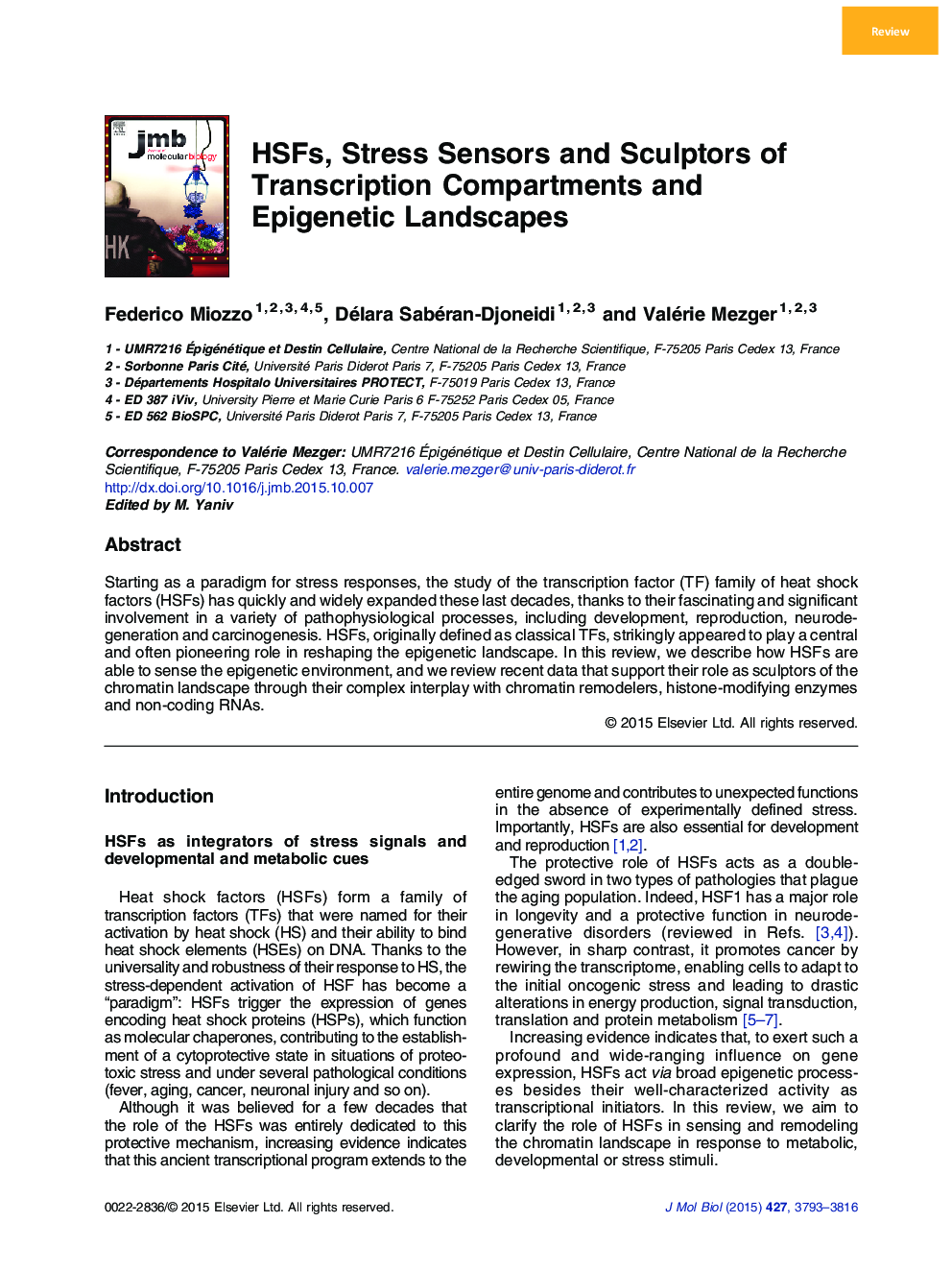| Article ID | Journal | Published Year | Pages | File Type |
|---|---|---|---|---|
| 2184269 | Journal of Molecular Biology | 2015 | 24 Pages |
•The HSF family members are stress-responsive TFs.•They represent a central hub in development, neurodegeneration and carcinogenesis.•They shape the epigenetic landscape by their pioneer factor abilities.•They act as crossroads with epigenetic actors.•They are regulated by epigenetic actors.
Starting as a paradigm for stress responses, the study of the transcription factor (TF) family of heat shock factors (HSFs) has quickly and widely expanded these last decades, thanks to their fascinating and significant involvement in a variety of pathophysiological processes, including development, reproduction, neurodegeneration and carcinogenesis. HSFs, originally defined as classical TFs, strikingly appeared to play a central and often pioneering role in reshaping the epigenetic landscape. In this review, we describe how HSFs are able to sense the epigenetic environment, and we review recent data that support their role as sculptors of the chromatin landscape through their complex interplay with chromatin remodelers, histone-modifying enzymes and non-coding RNAs.
Graphical abstractFigure optionsDownload full-size imageDownload high-quality image (170 K)Download as PowerPoint slide
